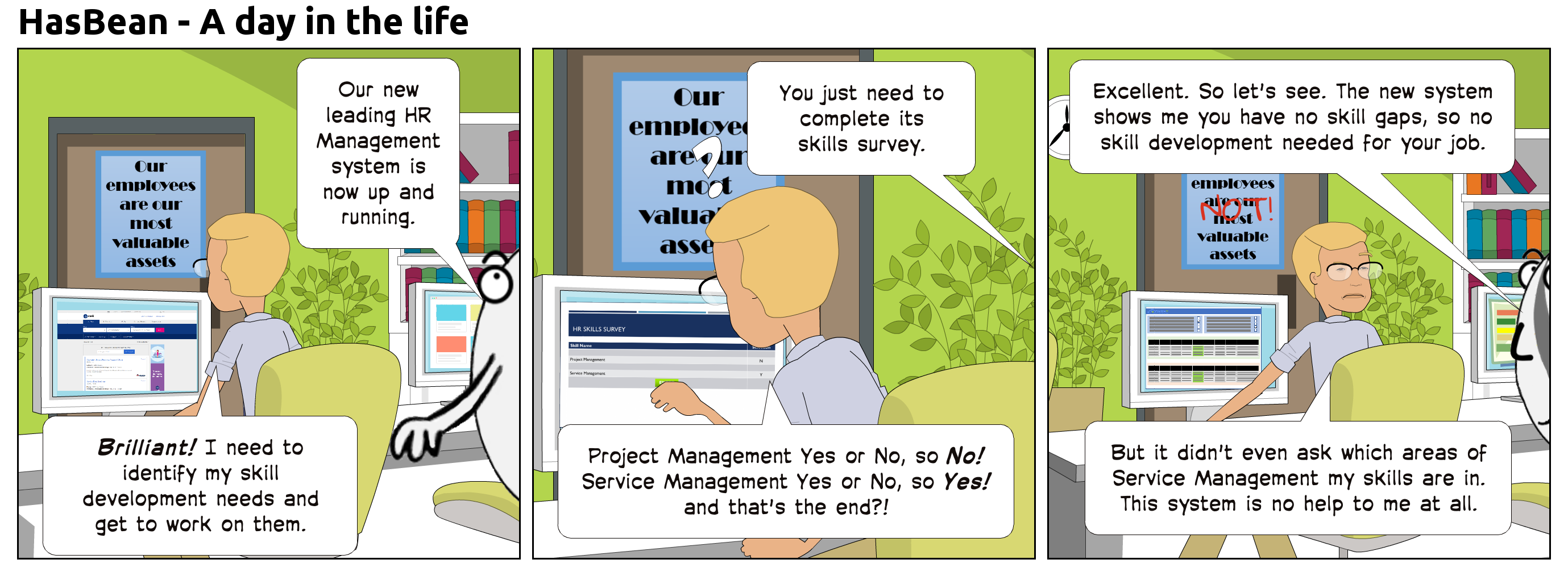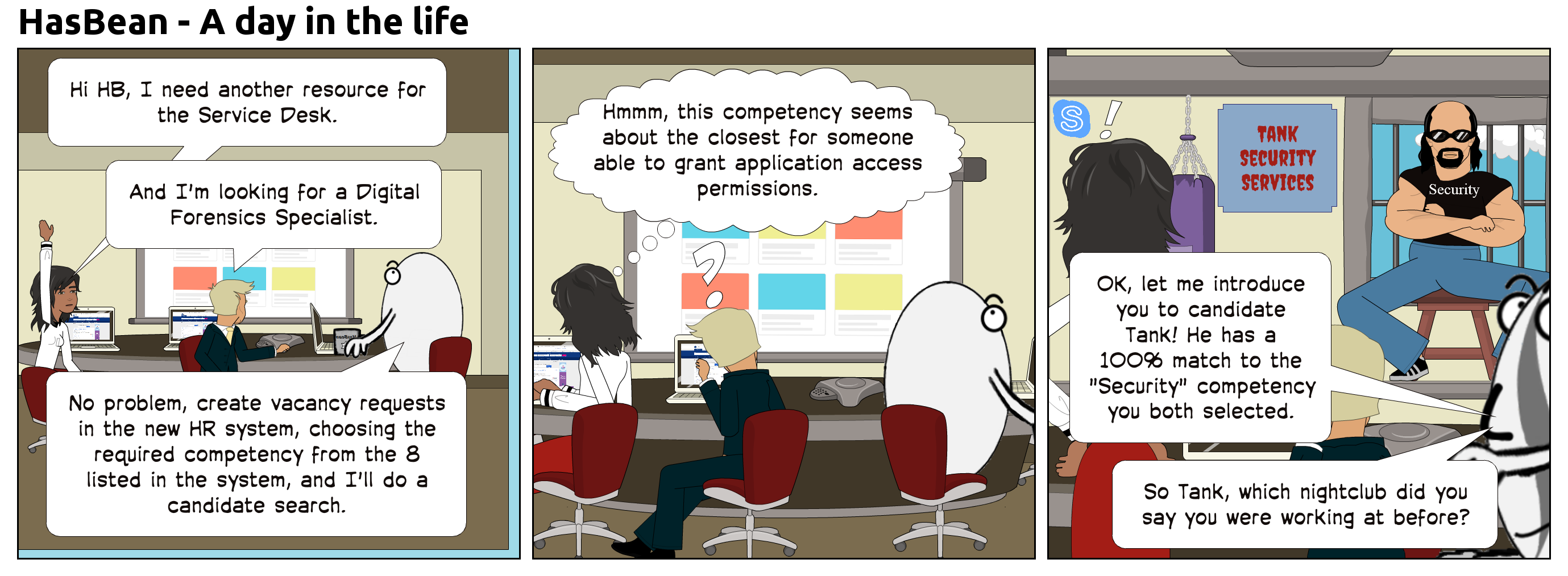As you know by now, digital transformation is about way more than technology – it’s a complete overhaul of how an organization conducts business. Highly successful organizations focus first on changing the culture and skills of their staff BEFORE they decide what technologies to use!
According to a recent Gartner study, “Most companies are flying “data blind” with regard to the skills they need for transformation” – https://www.gartner.com/smarterwithgartner/lack-of-skills-threatens-digital-transformation
If you ask most corporate HR leaders what skills & competencies are held by their ITC staff, 90% of the time you’ll get a list of the different software being supported by the enterprise architecture team and possibly a list of vendor specific certifications. Many times, we find there is a spreadsheet or spreadsheets stored all over the place with the skills and requirements from the original job description for which the person was hired, which a lot of time hasn’t been updated in ages.
The other common scenario is skills and competencies associated with job roles and job descriptions are defined at such a high level that the data is not particularly valuable. (See below)

For example, Service Management (ITSM/ITIL) consists of a multitude of different skills & competencies. Change Control, Configuration Management, Incident Management, Service Level Management, to name a few.
Most traditional HR and Learning Management Systems (LMS) do not define skills to even this level of granularity. It’s typically a simple check box of (Yes/No) on do you have skills in Service Management, Project Management, DevOps, Agile, etc.
Even if your skills management system gets deeper, in ITIL/ITSM terms, you’d likely have a skill / competency called “Service Design”. Certainly, a better description than “service management”, however when we use Skills Framework for the Information Age 8 (SFIA 8 – the latest version of the de facto international standard skills and competencies taxonomy for digital, IT and technology-related specialisms), Service Design could break down further in a variety of ways:
[one-half-first]
- Innovation (INOV)
- Emerging Technology Monitoring (EMRG)
- System Design (DESN)
- Solution Architecture (ARCH)
- Business Modelling (BSMO)
- Business Process Improvement (BPRE)
[/one-half-first]
[one-half]
- Requirements Definition and Management (REQM)
- User Research (URCH)
- User Experience Analysis (UNAN)
- User Experience Design (HCEV)
- Sourcing (SORC)
[/one-half]
As you might figure, knowing your organizational skills and competencies at this more granular level has some very interesting benefits.
- Better IT Resourcing capabilities
- Ability to share available resources across teams
- Greater team contribution for Agile / Scrum sprints & projects
- Better insights into build vs. buy decisions when hiring for new positions
- Do we have the needed skills internally or do we need to outsource or hire?
- Do we have someone that has most of the skills required that we can upskill?
Adopting SFIA across your organization allows you to define and discuss digital skills using a common language (a dictionary per se). Having a best practice standard for roles, job descriptions, skills and competencies is incredibly useful for both internal talent management and your talent acquisition teams.
Identifying a security specialism is still too generic – do you need a Digital Forensics Specialist or someone who grants access permissions to systems? There are far too many stories out there of poor job requirements definitions leading to wasted time and resources on the wrong people. We see this scenario below far too often…

No matter what platform, software, ecosystem, or whatever IT speak you’re using, no matter what consulting company is advising you on all the software and services you need to buy to achieve transformation, this human capital scenario is beyond counterproductive.
With even a little bit of executive buy-in on the why, getting employees to buy-in to doing a SFIA self-assessment is very valuable to the individual when presented the right way. The insights and analytics that can be realized organizationally can have an ROI infinitely greater through increased employee engagement, better investment in training and development programs that are on-point to both company and individual objectives, identifying upskilling / reskilling opportunities where skill gaps are identified.
There is a 100% chance that your existing staff possess digital skills, knowledge and competencies that are unused in their current roles and/or are not described in their job description, leaving digital strategists ill-equipped to ensure the right people are assigned to the right roles or tasks within the organization. These undiscovered and transferable skills provide an abundance of treasure in untapped digital talent.
When the culture shift occurs where digital team members know where they are and where they are upskilling, combined with an understanding of the “why”, amazing things can happen!
If senior leadership cannot find a way to solve the digital skills management puzzle, they will get left behind by competitors who are better able to identify the skills they have and the skills they need – and when it makes sense to steal them from you!
About the Author:
 John Kleist III has always been a passionate advocate for the people side of technology and enterprise transformation. With a background in service management, business relationship management, knowledge management and enterprise software, John is a former itSMF USA Member of the Year and is currently a SFIA (Skills Framework for the Information Age) Evangelist for the Americas at SkillsTx.
John Kleist III has always been a passionate advocate for the people side of technology and enterprise transformation. With a background in service management, business relationship management, knowledge management and enterprise software, John is a former itSMF USA Member of the Year and is currently a SFIA (Skills Framework for the Information Age) Evangelist for the Americas at SkillsTx.
![]()
![]()
Tag/s:AutomationEducationFuture of WorkPersonal Development





